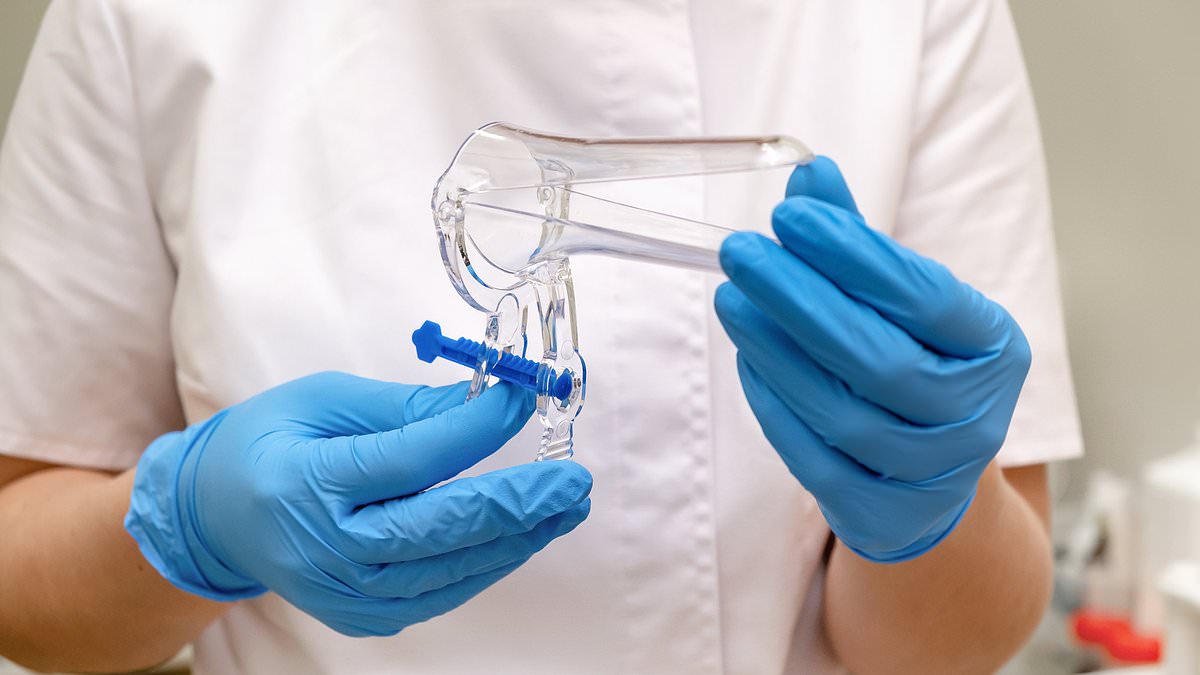Doctors are racing to cure cervical cancer in less than ten years, calling it that only cancer ‘that we can say we can eliminate.’
Cervical cancer is the fourth-most common form of the disease in women. However, unlike most other cancers on the rise, doctors know what causes it.
Most of the time, it’s caused by the common sexually transmitted infection human papillomavirus (HPV) – and there’s already a cure for it.
The vaccine for HPV is more than 90 percent effective, experts estimate, though they warn that not enough Americans are getting it.
Dr Linda Eckert, a gynecologist at the University of Washington, fears that the low vaccination rate could be behind a recent uptick in advanced cervical tumor cases, seen mostly in women in their 30s and 40s.
She plans to give a testimony at the White House Thursday expressing concerns that complacency is fueling the increase.
She said: ‘In the United States, a woman is dying every two hours of a cancer. We have the tools, right now, to eliminate this statistic. We must do better.’

A study published in the International Journal of Gynecological Cancer found that even though early-stage cervical cancer rates are decreasing, late-stage cases have gradually risen year over year

Cervical cancer symptoms to look out for include unusual vaginal bleeding, pain during sex and lower back or pelvic pain
The Centers for Disease Control and Prevention (CDC) states that ‘almost all cervical cancers are caused by human papillomavirus (HPV).’
HPV is the most common sexually transmitted infection (STI), mostly affecting teens and young adults.
The CDC estimates that 13 million Americans are affected by HPV every year.
In nine out of 10 cases, it goes away without causing issues. However, it can lead to cervical, throat, anal, penile, vaginal, and vulvar cancers.
Cervical cancer cases are largely on the decline in the US. Research published in 2023 by the ACS, for example, found that among women between ages 20 and 24, cervical cancer rates dropped by 33 percent from 2005 to 2012 and by 65 percent from 2012 to 2019.
These women were also the first to receive the HPV vaccine when it was rolled out in 2006. The shot is given to girls and women between nine and 26 years old in the US.
Rebecca Siegel, lead study author and senior scientific director of surveillance research at the ACS, said: The large drop in cervical cancer incidence is extremely exciting because this is the first group of women to receive the HPV vaccine, and it probably foreshadows steep reductions in other HPV-associated cancers.’
The authors said these findings show that HPV vaccination can ‘virtually eliminate cervical cancer.’ However, vaccination rates are low.
The ACS states that in 2020, only 32 percent of boys and girls ages 13 to 17 in Mississippi and 43 percent in West Virginia were up to date on their HPV vaccinations.
An analysis from America’s Health Rankings, based on CDC data, found that South Carolina, West Virginia, Wyoming, Oklahoma, and Mississippi ranked lowest in terms of HPV vaccination.
Overall, 63 percent of US teens ages 13 to 17 are vaccinated against HPV.

HPV has been linked to more than 90 percent of cervical cancer rates. However, just 63 percent of US teens have been vaccinated against it
Dr Scarini noted that the cervical cancer rate in Alabama, where she practices, has been exacerbated due to a lack of screening and follow-up, especially in low-income areas where residents can’t afford to take time off to visit a doctor.
The lack of vaccination could contribute to the rise in late-stage cervical cancer. Experts from Harvard University said what while early-stage rates are dropping, ‘advanced cervical cancer cases have not declined within any US racial, ethnic, or age group over the last 18 years.’
They pointed to a study published in the International Journal of Gynecological Cancer, which found that new diagnoses of advanced cervical cancer have risen by 1.3 percent annually from 2001 to 2018.
The increase was most prevalent in southern women. Southern white women ages 40 to 44 saw an annual rise in advanced cases of 4.5 percent, and southern black women ages 55 to 59 were diagnosed nearly twice as often as white women with early and late cases.
Fewer people in these states are vaccinated against HPV, the ACS’s findings show, which could contribute to these disparities.
Additionally, a report released this week by the ACS found that cervical tumors are rising by nearly two percent in women ages 30 to 44. They said this could be due to that age group being too old to receive the HPV vaccine when it was rolled out.
Dr Ursula Matulonis, chief of the Division of Gynecologic Oncology at Dana-Farber Cancer Institute, said that increasing cancers of adenocarcinoma could also be driving up this increase, as these occur higher up in the birth canal and are harder to detect during screening.
Misdiagnosis could also be fueling the rise.
Kerry Pugh, a 48-year-old mother-of-three from the UK, initially had her regular screening results dismissed as normal when she was experiencing abnormal bleeding.
Two years later, she died from cervical cancer.
Dr Scarini and Dr Eckert both urged parents to get their teenagers vaccinated against HPV.

Kerry Pugh, a 48-year-old mother-of-three from the UK, died from cervical cancer two years after doctors mistook her screening test results as normal
‘If we can prevent HPV infection, we can prevent cervical cancer. For that, we have the HPV vaccine,’ Dr Eckert previously wrote for Mail Online.
‘It prevents an astonishing 90 percent of cervical cancers; by comparison, doctors are pleased when the flu jab is 50-60 percent effective.’
‘The vaccine alone, especially when given to teenage boys as well as girls, could eliminate cervical cancer. Screening can speed up that process.’
Dr Isabel Scarini, the vice chair for Global and Rural Women’s Health in the Department of Obstetrics and Gynecology at the University of Alabama at Birmingham, contracted polio as a child when her mother was convinced wait to give her the second dose of the vaccine.
As a result, the disease spread to both of her arms and legs, leaving her with a noticeable limp.

Dr Linda Eckert said: ‘We have the tools, right now, to eliminate this statistic. We must do better’
Dr Scarini is now that channeling that experience into advocating for vaccines to prevent infections that lead to cervical cancer with Operation Wipe Out, which aims to eliminate the disease by 2033.
Though cervical cancer rates have largely dropped since preventative vaccinations for the infection that causes it were introduced, late-stage disease remains on the rise.
This has left experts to call for increased screening and vaccine education, particularly in rural areas, citing that ‘we must do better.’
‘Cervical cancer is really the only cancer today that we can say we can eliminate,’ she told WVTM 13. ‘I am a living testimony of what vaccination can do.’
Cervical cancer starts in the cervix, a small canal that connects a woman’s uterus to her vagina.
According to the National Cancer Institute (NCI), cervical cancer often doesn’t cause symptoms in the earlier stages, making it more difficult to detect.
When they do occur, symptoms include bleeding after sex, menopause, or between periods. Vaginal discharge that’s watery, hs a strong odor, or contains blood can also occur, as well as pelvic pain, especially during sex.
As the cancer progresses, it can cause difficulty having a bowel movement or urinating, backache, leg swelling, abdominal pain, and fatigue.
The American Cancer Society (ACS) estimates that nearly 14,000 cases of cervical cancer will be diagnosed in 2024, along with about 4,300 deaths.
According to the ACS, cervical cancer most commonly affects women between ages 35 and 44, and the average age is 50.










